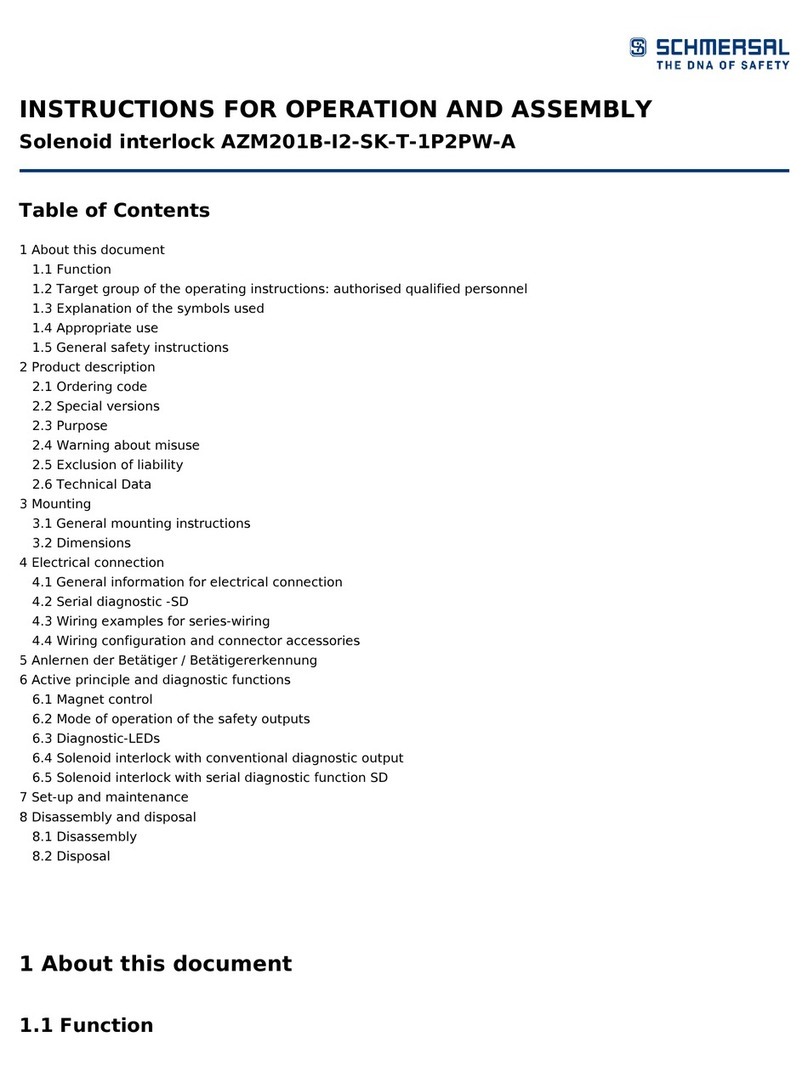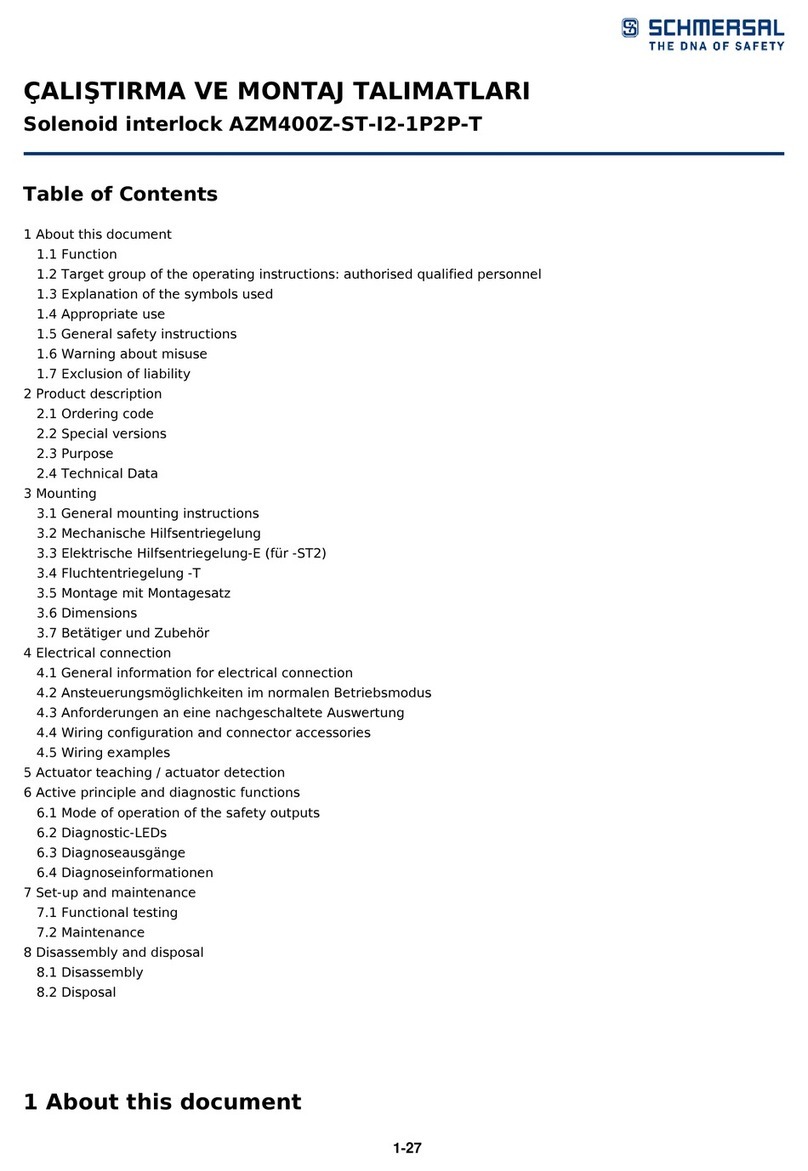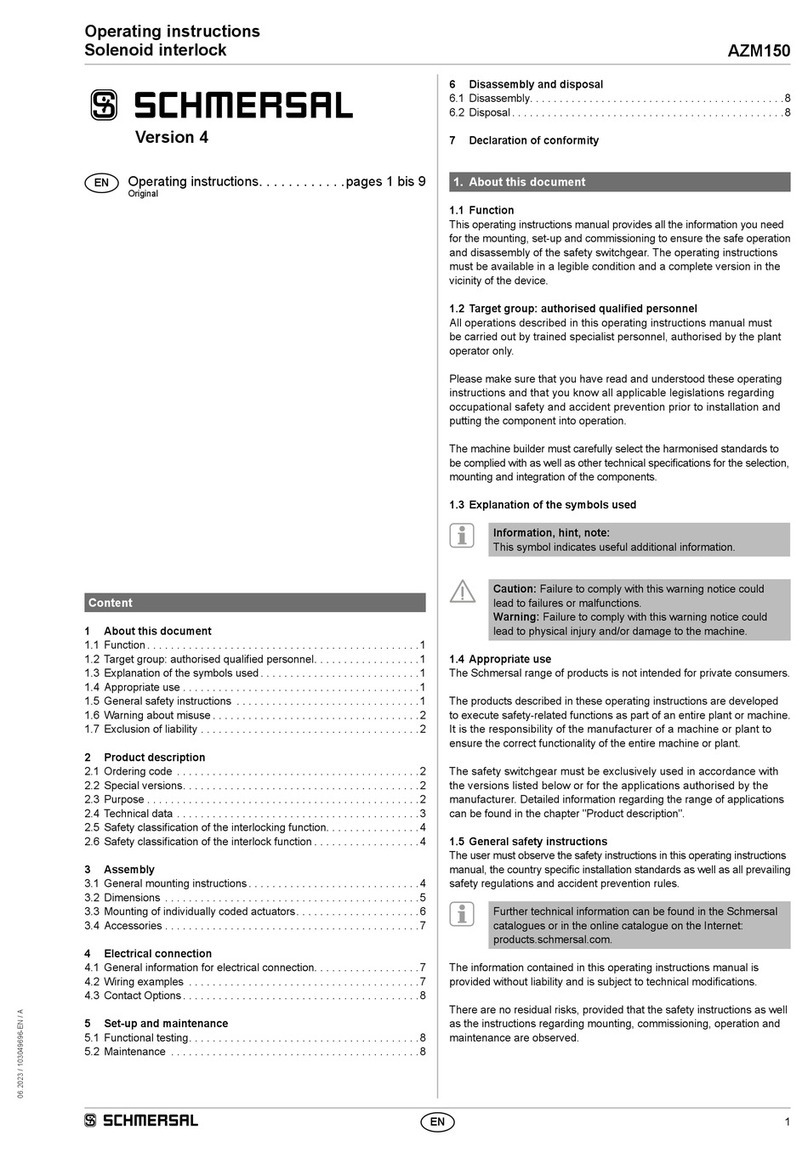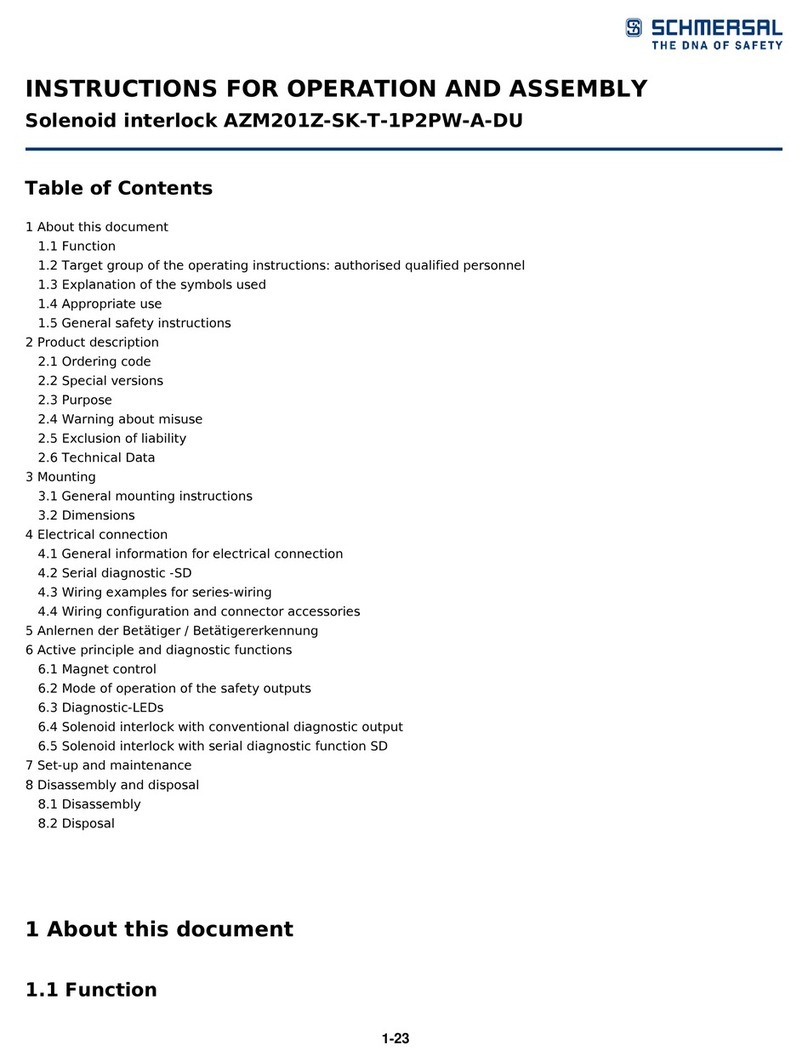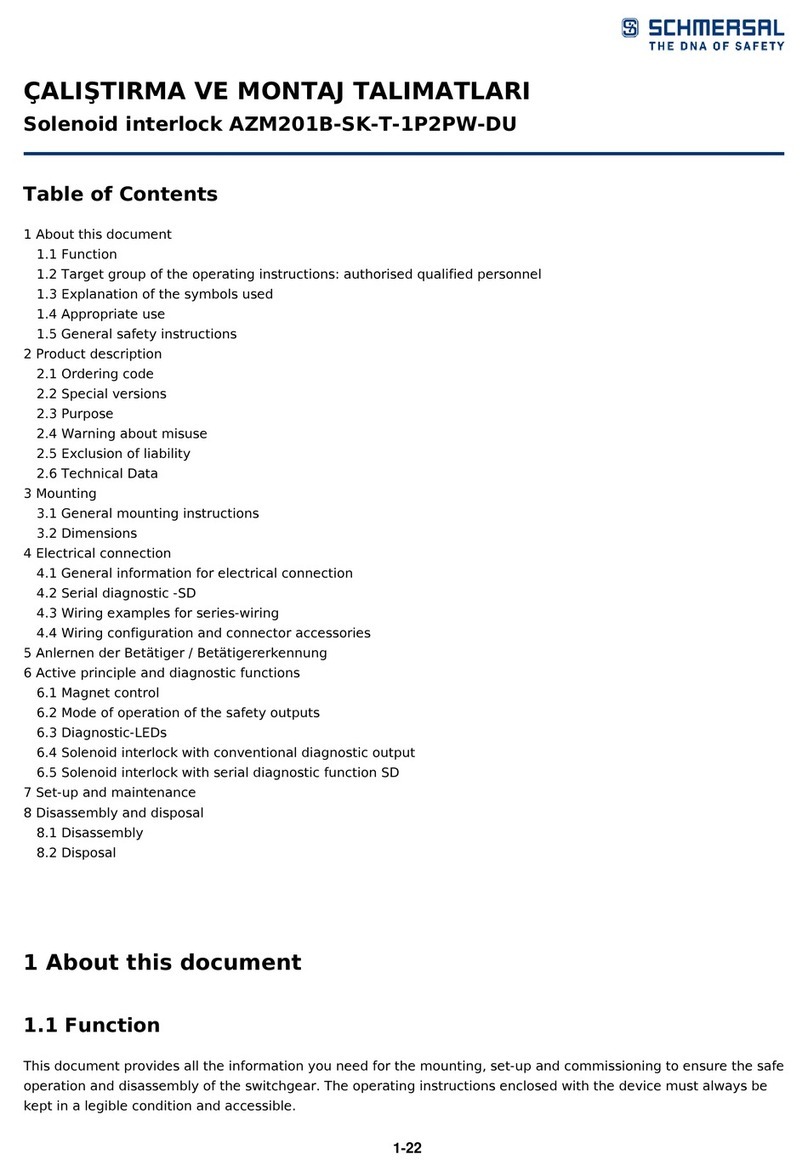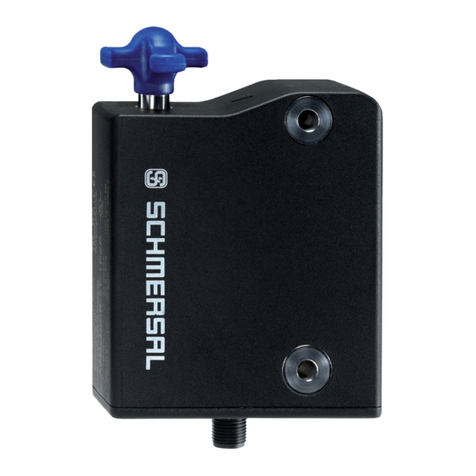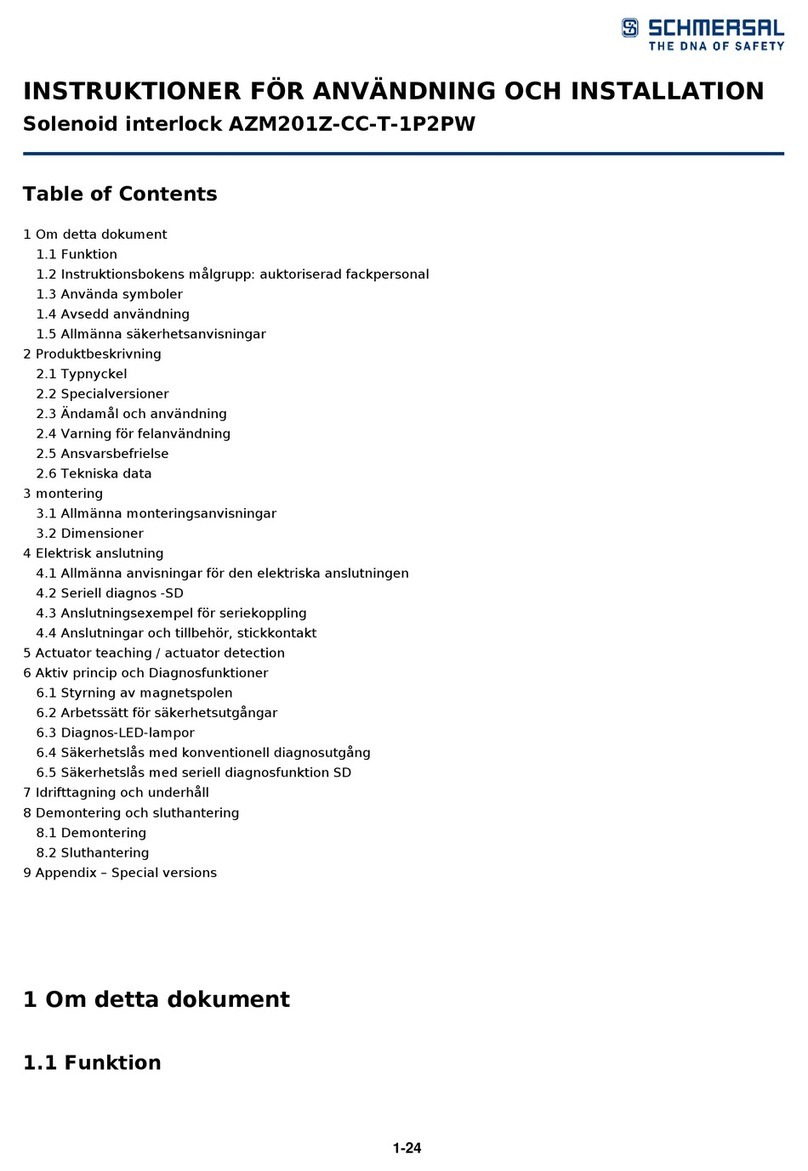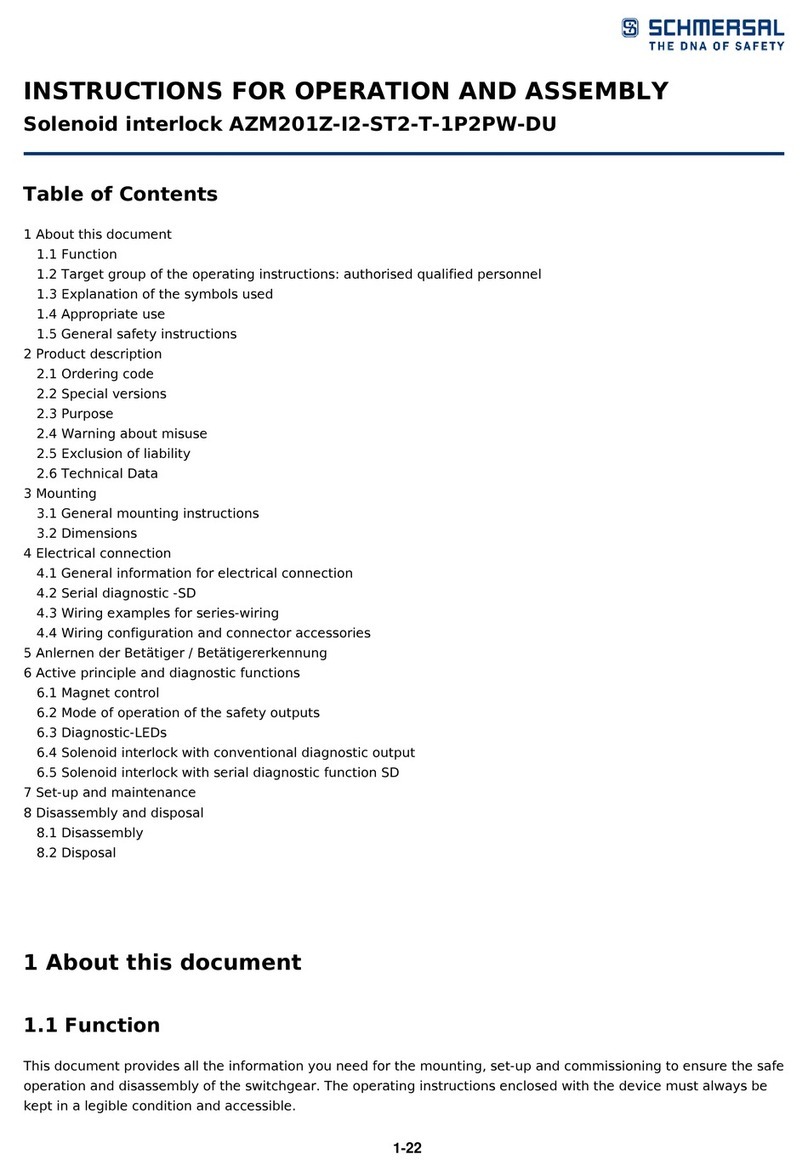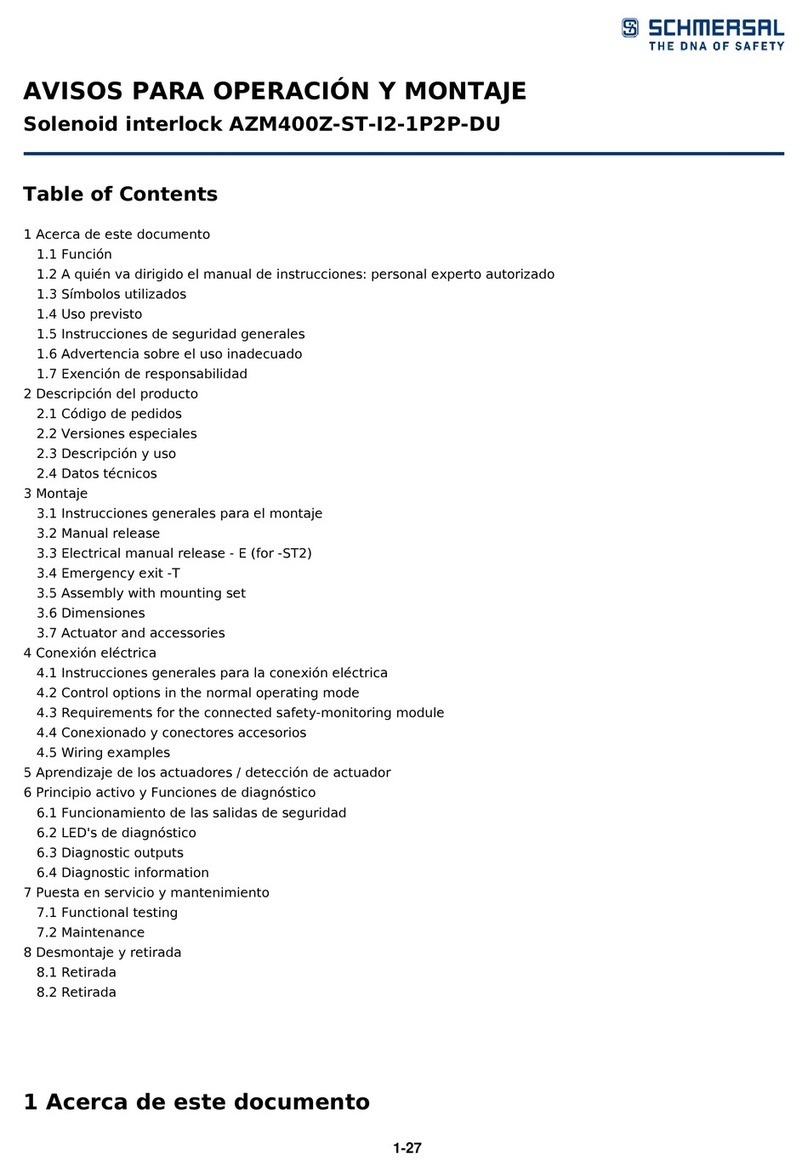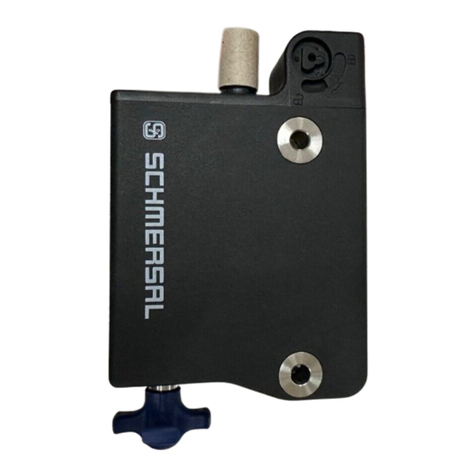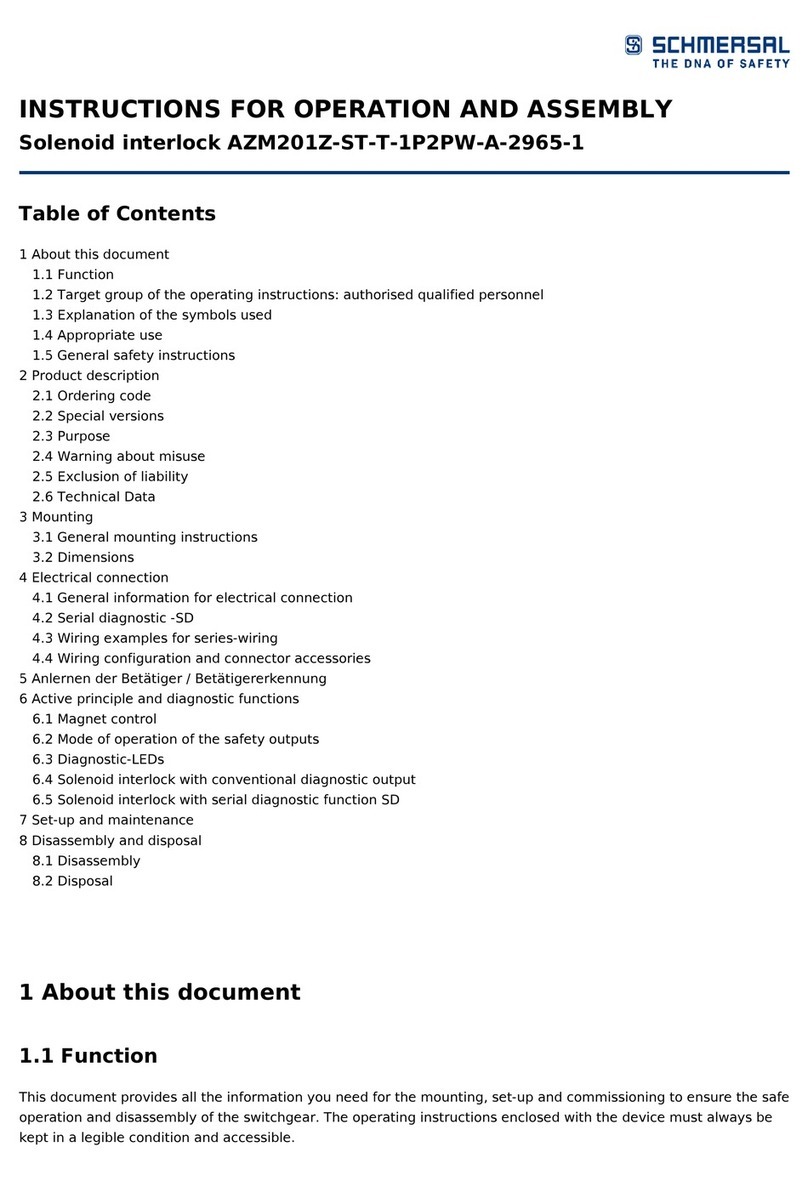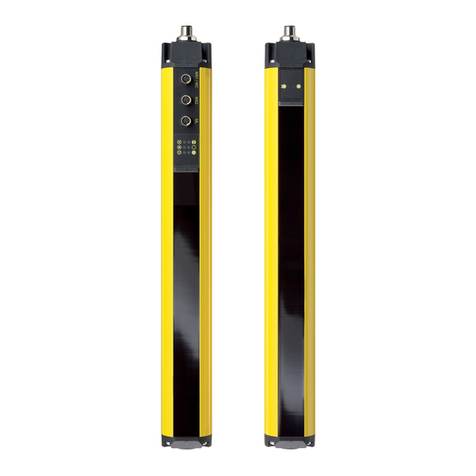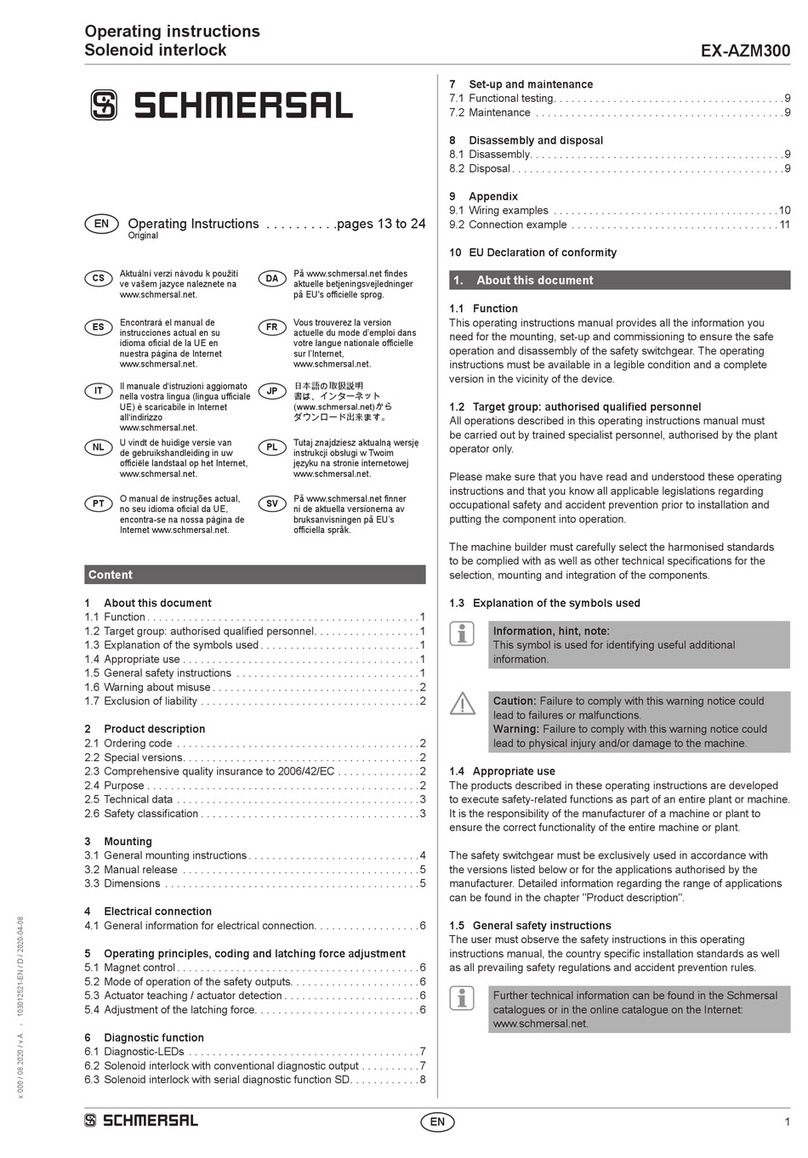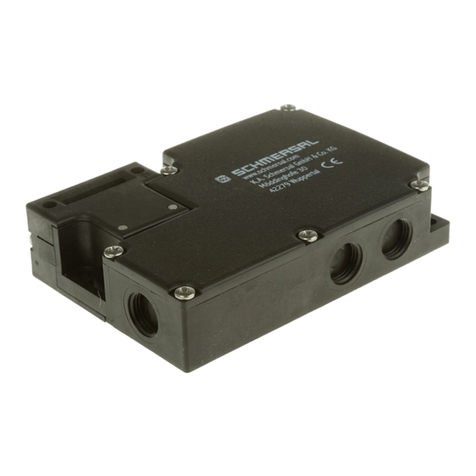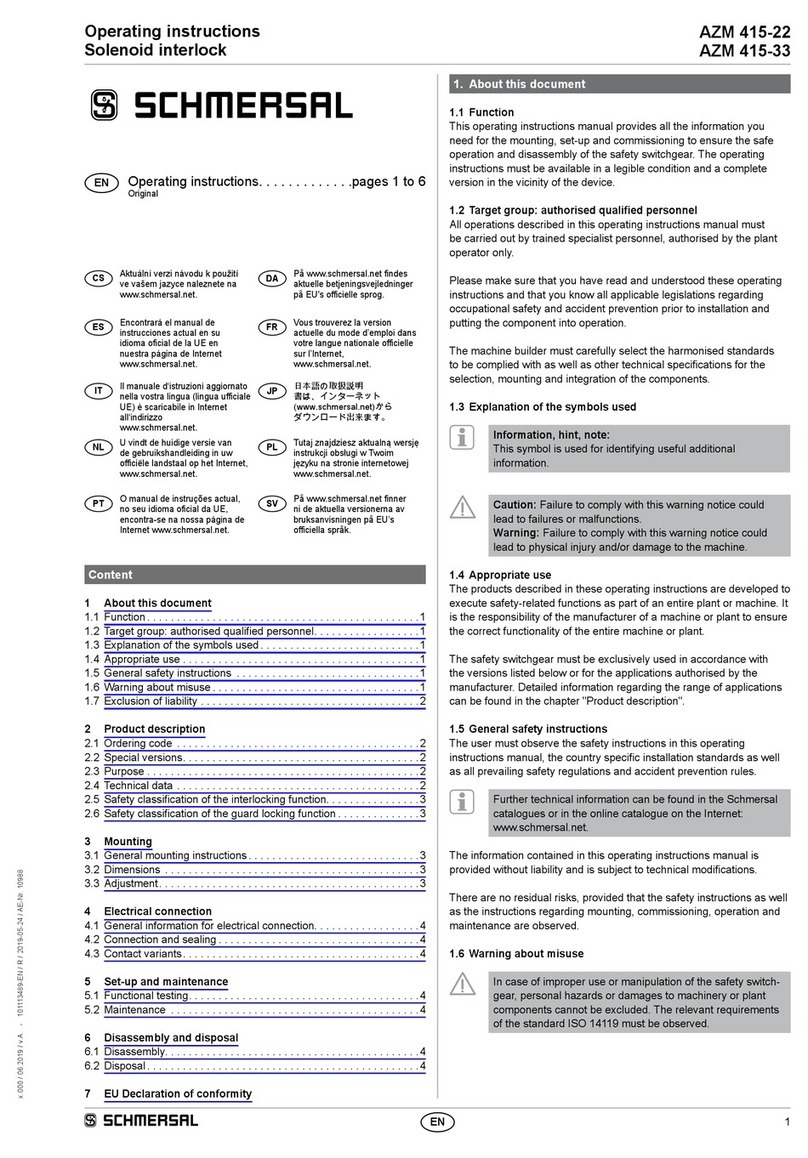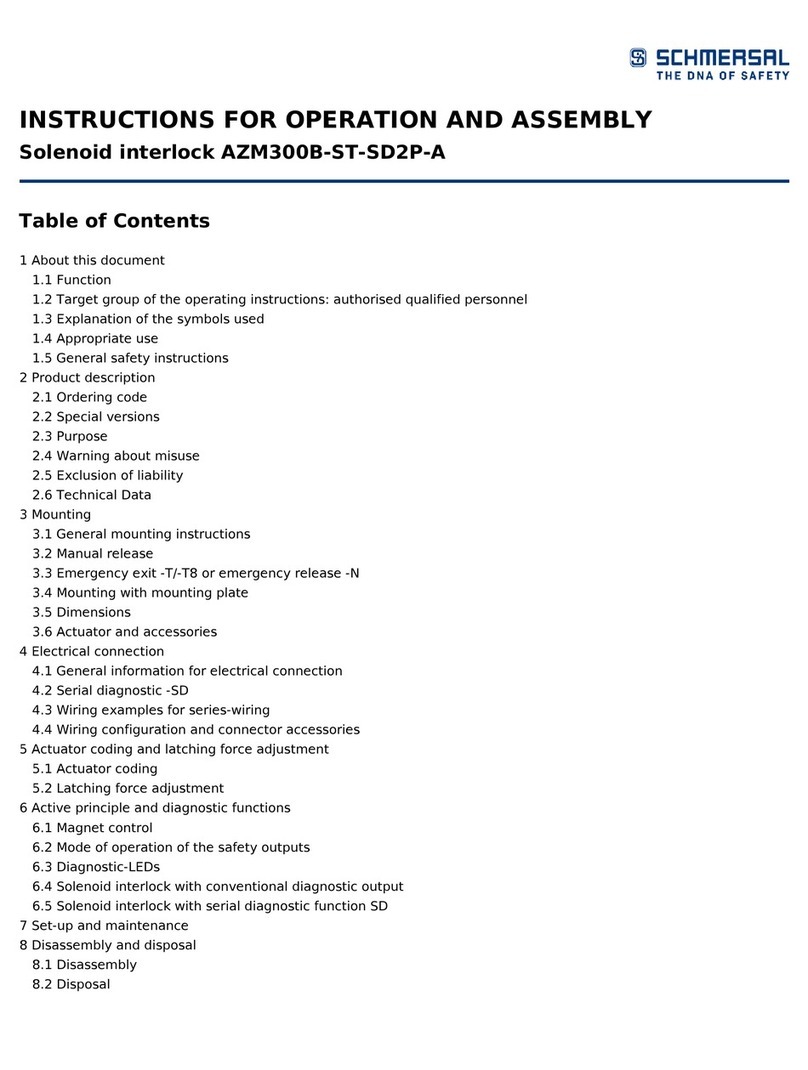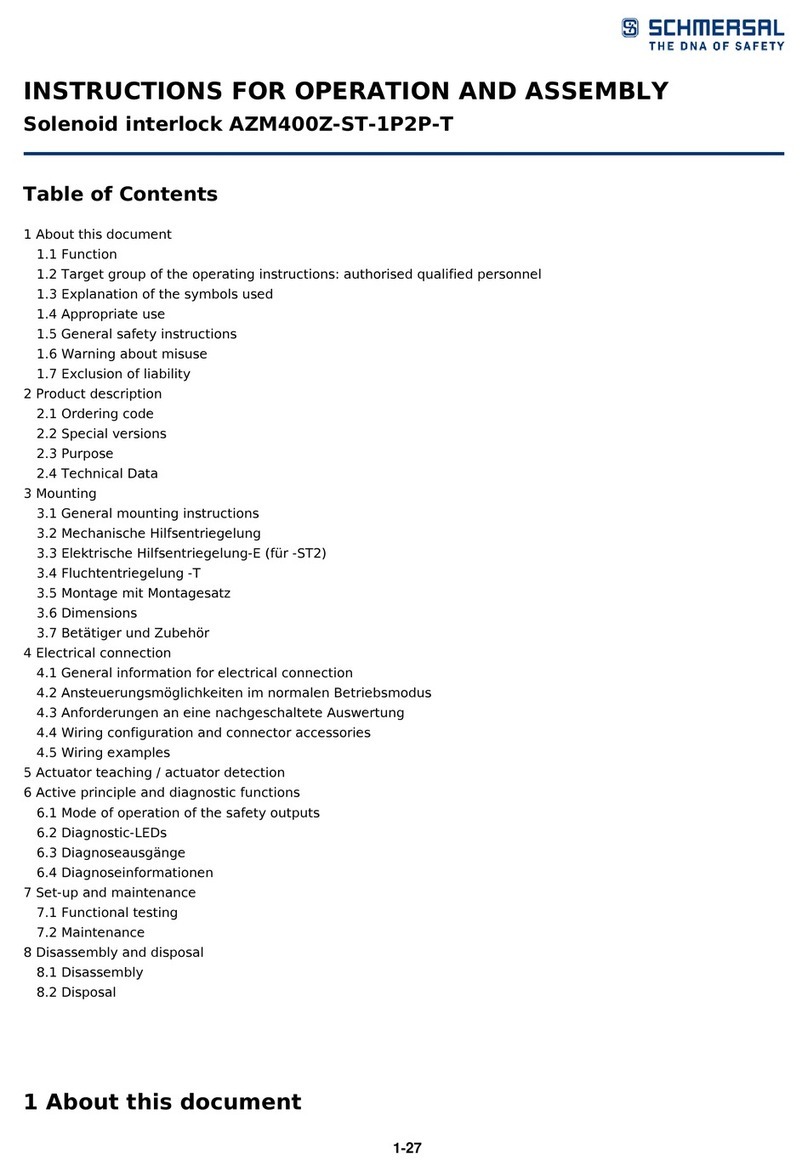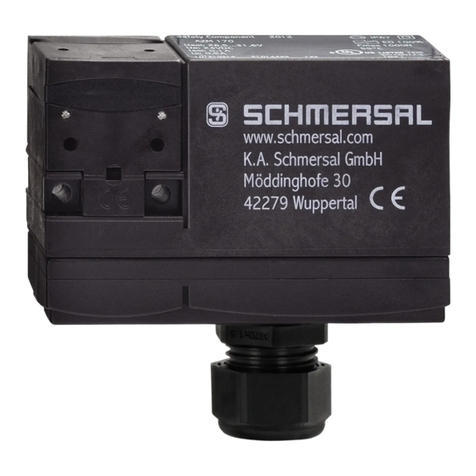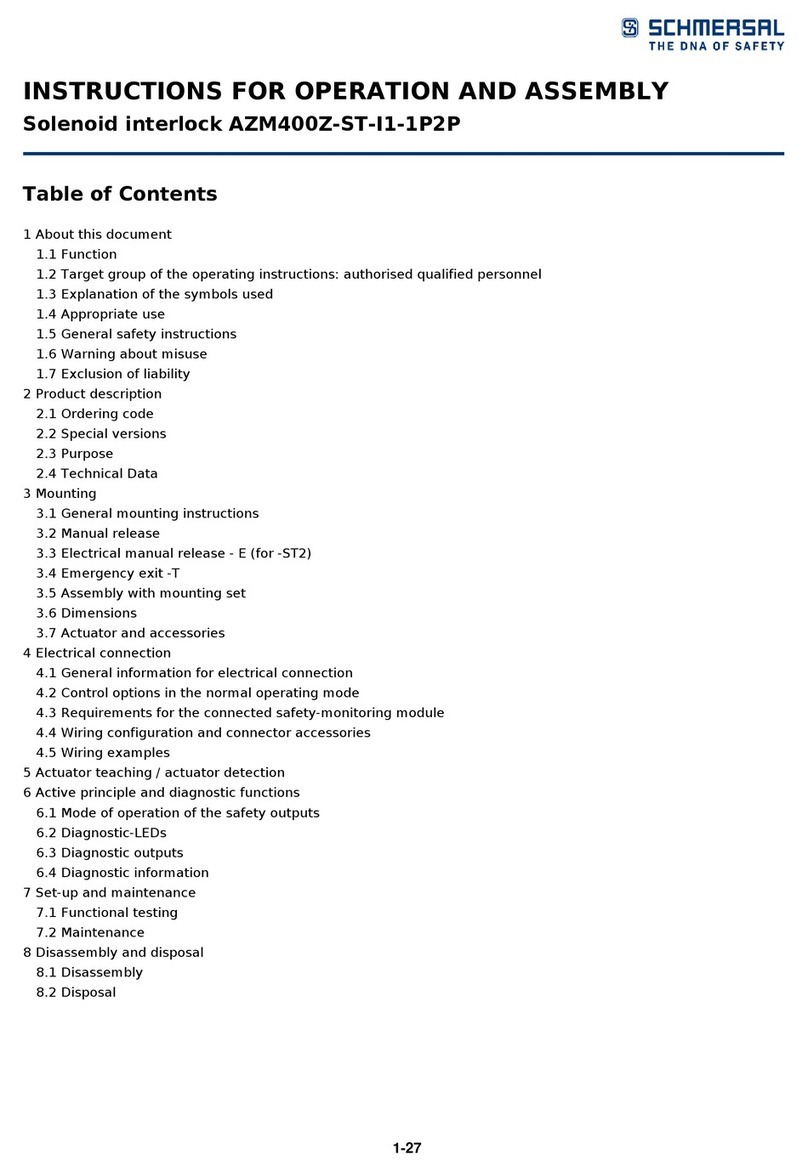
2.3 Purpose
The non-contact, electronic safety switchgear is designed for application in safety circuits and is used for monitoring
the position and locking of movable safety guards.
FThe safety switchgears are classified according to EN ISO 14119 as type 4 interlocking devices. Designs with individual
coding are classified as highly coded.
The different variants can be used as safety switch with interlocking function either as solenoid interlock.
2If the risk analysis indicates the use of a monitored interlock then a variant with the monitored interlock is to be used,
marked with the > symbol in the ordering code.
The actuator monitoring variant (B) is a safety switch with an interlock function for process protection.
The safety function consists of safely switching off the safety outputs when the safety guard is unlocked or opened
and maintaining the safe switched off condition of the safety outputs for as long as the safety guard is open.
2Interlocks with power to lock principle may only be used in special cases after a thorough evaluation of the accident risk,
since the safety guard can be opened immediately on failure of the power supply or upon activation of the main switch.
Series-wiring
Series-wiring can be set up. In the case of a series connection, the risk time remains unchanged and the reaction
time increases by the sum of the reaction time of the inputs per additional unit specified in the technical data. The
quantity of devices is only limited by the cable drops and the external cable fuse protection, according to the
technical data. Up to 31 device variants with serial diagnostics can be wired in series.
2The user must evaluate and design the safety chain in accordance with the relevant standards and the required safety
level. If multiple safety sensors are involved in the same safety function, the PFH values of the individual components must
be added.
2The entire concept of the control system, in which the safety component is integrated, must be validated to the relevant
standards.
2.4 Warning about misuse
2In case of improper use or manipulation of the safety switchgear, personal hazards or damages to machinery or plant
components cannot be excluded. There are no residual risks, provided that the safety instructions as well as the
instructions regarding mounting, commissioning, operation and maintenance are observed.
2.5 Exclusion of liability
We shall accept no liability for damages and malfunctions resulting from defective mounting or failure to comply
with the operating instructions manual. The manufacturer shall accept no liability for damages resulting from the
use of unauthorised spare parts or accessories.
